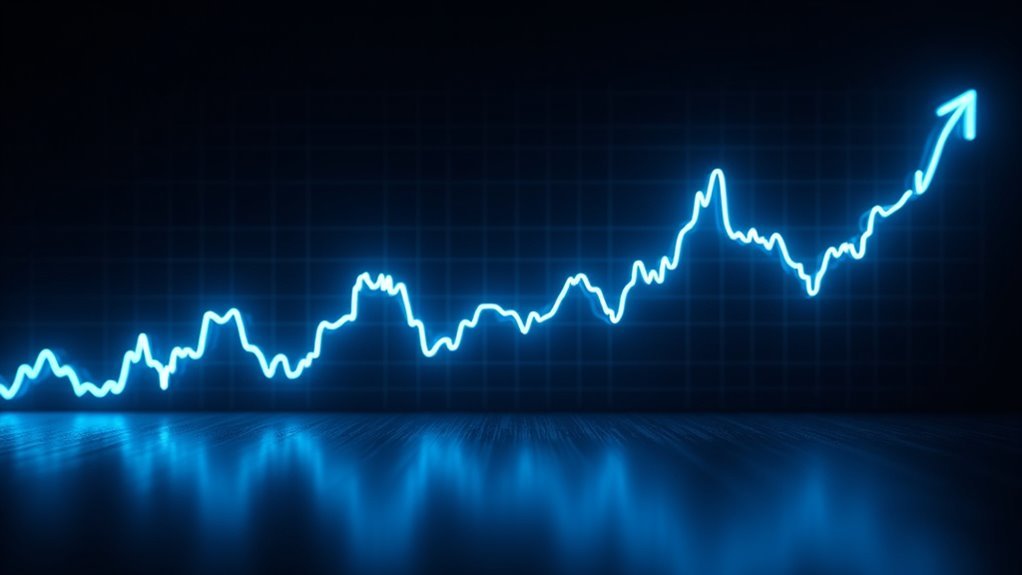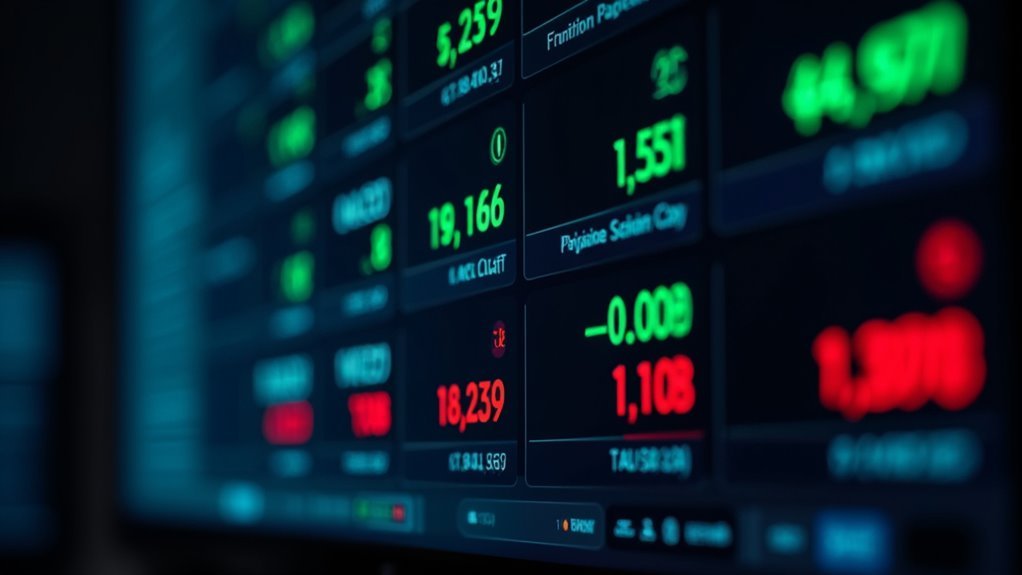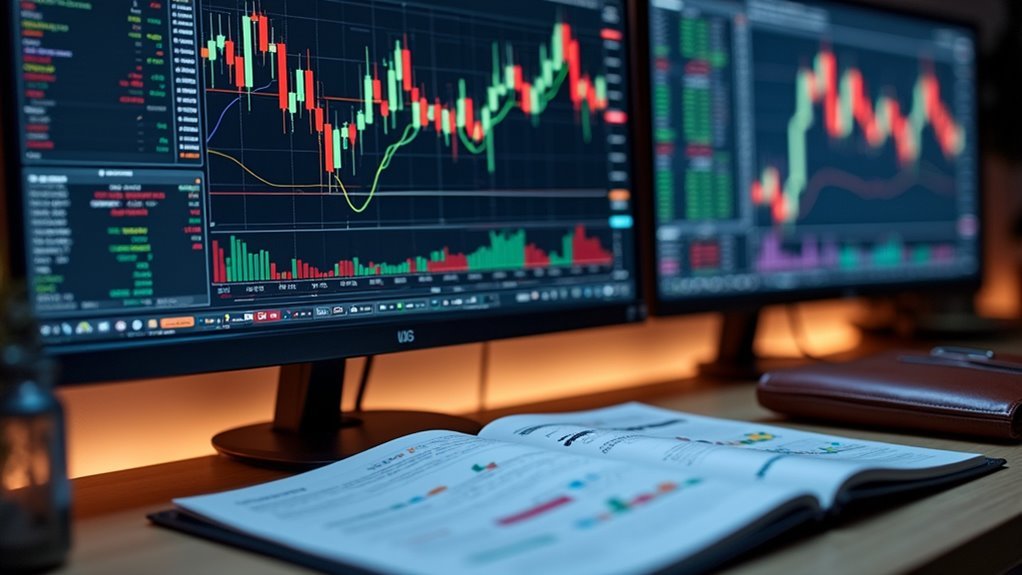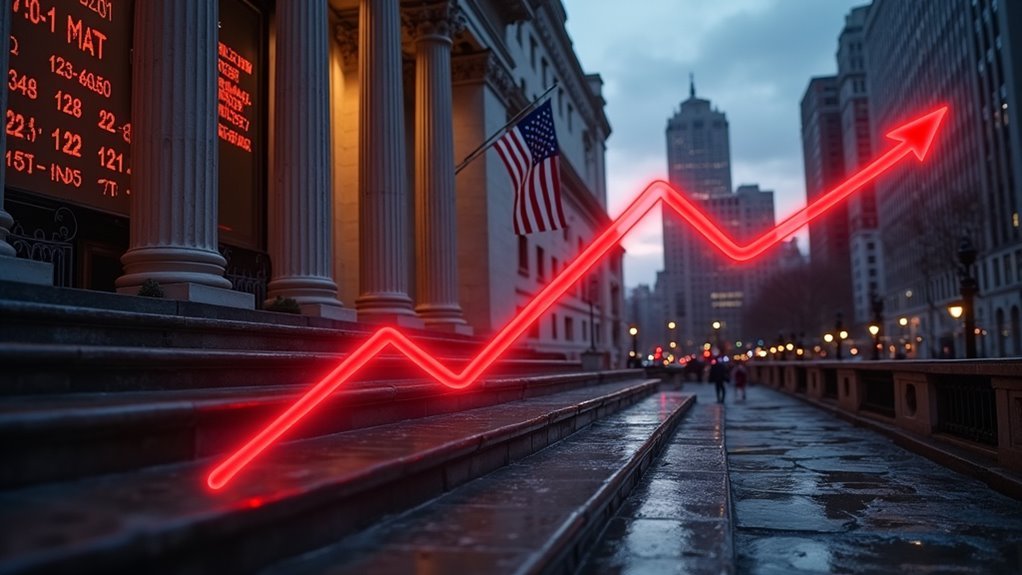Market volatility is finance’s wild teenager, throwing tantrums over everything from CEO tweets to global crises. Stock prices bounce around like a caffeinated kangaroo, influenced by economic reports, political drama, and natural disasters. The VIX “fear gauge” tracks these mood swings, while tools like Bollinger Bands help predict the next market meltdown. September and October are particularly moody months, with the S&P 500 typically swinging 15-20% annually. There’s a method to this market madness.

While market volatility might sound like a medical condition, it’s actually the financial world’s equivalent of a roller coaster ride. It’s all about how much stock prices swing up and down over time. Sometimes these swings are gentle ripples. Other times, they’re stomach-churning plunges that make investors wish they’d kept their money under their mattresses.
The reasons behind these wild price swings? Take your pick. Could be anything from an unexpected tweet by a CEO to a full-blown global crisis. Economic reports send traders into a frenzy. Political drama makes markets jittery. And don’t forget Mother Nature – one natural disaster can send entire sectors into a tailspin. High-frequency traders contribute to market instability by placing false bids that can trigger sudden price collapses. The market, as it turns out, is about as emotionally stable as a teenager.
Market forces are like teenagers – one day they’re on top of the world, the next they’re crashing over the smallest thing.
Wall Street loves measuring this chaos. They’ve got fancy tools like the VIX – nicknamed the “fear gauge” because it shows just how scared investors are feeling about the S&P 500. There are also Bollinger Bands and something called Beta, which sounds like a fraternity but actually compares how volatile one stock is versus the entire market. Experts use standard deviation calculations to measure exactly how wild these price swings get over time. A typical market correction happens when prices drop 10-20% from recent highs, serving as a natural reset in the market cycle.
History shows us that markets have their moody seasons. September and October? Those are typically drama queens. The 2008 financial crisis and 2020 pandemic? Pure market meltdowns. Since the 1980s, markets have gotten increasingly temperamental, with the S&P 500 typically swinging 15-20% annually. It’s like the markets are mainlining espresso.
For investors, this volatility is both friend and foe. Sure, it creates opportunities for quick profits if you’re brave (or crazy) enough to try timing the market. But it also means more stress, more risk, and more nights staring at the ceiling wondering if your retirement fund is safe.
Some folks handle it by spreading their investments around – the old “don’t put all your eggs in one basket” trick. Others keep cash on hand, ready to pounce when prices drop. It’s financial survival of the fittest out there.
Frequently Asked Questions
How Can I Protect My Retirement Savings During Periods of High Volatility?
During market turbulence, investors often turn to diversification across multiple asset classes.
Cash reserves provide a safety net – letting people avoid selling investments at low points.
Some choose protective strategies like put options or stop-loss orders.
Bonds typically offer stability when stocks tumble.
Target-date funds automatically adjust risk levels as retirement approaches.
Low-volatility stock funds can help smooth out wild market swings.
What Time of Day Typically Shows the Most Stock Market Volatility?
The opening hour of trading (9:30-10:30 AM ET) packs the biggest punch, accounting for 26% of daily volatility.
Markets get wild as overnight news hits and pre-market orders flood in. Big institutional players love making their moves early.
The closing hour takes second place, with 16% of daily price swings as traders scramble to close positions and funds rebalance portfolios.
Do Certain Months or Seasons Experience More Market Volatility Than Others?
September and October are notorious for market drama.
September’s actually the worst-performing month historically, with an average -0.7% return since 1928.
October? Famous for epic crashes – think 1929, 1987, 2008.
Summer months tend to get choppy too, thanks to lower trading volumes when everyone’s on vacation.
But winter brings some calm – December’s typically the second-best month for returns.
Go figure.
How Do International Events Affect Market Volatility in Domestic Stock Markets?
International events hit domestic markets hard and fast.
Wars, health crises, and political upheavals send shock waves through stock exchanges worldwide. Trade wars? Markets tank. Natural disasters? Supply chains break.
Even a coup in a tiny country can trigger panic selling.
It’s all connected now – what happens in Beijing or Moscow impacts Wall Street within seconds. Global markets don’t take coffee breaks or respect borders.
Can Individual Investors Benefit From Market Volatility Through Specific Trading Strategies?
Individual investors can tap into market volatility through several proven strategies.
Day traders chase quick profits during price swings, while options traders use leverage to amplify returns.
Dollar-cost averaging – boring but effective – smooths out the rough patches.
Swing traders find their sweet spot between day trading chaos and long-term snoozing.
Each approach works. Pick your poison.
Just remember: higher potential returns mean bigger risks.







